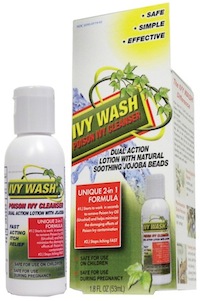DEAR DR. GOTT: I saw on a discussion site that you no longer recommend pau d’arco as a cure for athlete’s foot. Well, I have to tell you that years ago when nothing else worked, I used this for my son. Finally, his feet were cured. I used it again when he had eczema and it again worked when nothing else did. I have no idea why it would work on eczema, except maybe the oils in the bark did the trick.
Fast forward ten years, the same young man is now in combat in Afghanistan. First, it is so hot that their boots are soaked every day, then it is freezing all the time. After eight months he came home on a visit and his feet and hands looked like they’d been through their own war. The creams and oils and lotions that we had sent just didn’t help. So once again I went back to the old standby, pau d’arco. At the time that he headed back to war his feet weren’t completely healed, but were finally getting better. This summer I recommended it to a desperate friend for her four-year-old’s severe eczema. It was the first relief that they had found in two years of searching. Please reconsider telling people about it. When all else fails, it might be the only answer.
DEAR READER: Pau d’arco is a broad leaf evergreen tree native to South America. It has been used to treat a wide range of ailments such as pain, arthritis, various cancers, influenza, herpes simplex virus, bacterial and yeast infections, parasitic diseases, fever, dysentery, boils, ulcers, and inflammation of the prostate; however, there is no evidence that it will help.
Research has been done on the wood, not the inner bark which is most commonly used. Two active chemicals, lapachol and beta-lapachone, have been identified. They were found to have anti-inflammatory properties and kill some viruses, bacteria, fungi, and parasites.
Pau d’arco is currently sold as tablets, tincture and dried bark tea. The chemicals don’t dissolve well, so tea is not recommended. Most of the products are not standardized so some brands may contain too much of the active chemicals, while others contain too little.
Of note is that due to a renewed demand, the trees are now endangered.
All that being said, some readers like yourself have had success treating fungal infections, such as athlete’s foot or nail fungus, by soaking the feet in dried bark tea. I don’t recommend applying it topically to children without physician approval or that anyone take it internally. You can learn more about it online at the University of Maryland Medical Center, www.umm.edu/altmed/articles/pau-darco-000268.htm.
As a last resort, I don’t see any harm if the tea is used with physician approval but I recommend trying other, safer options first. For nail fungus and athlete’s foot, try white or cider vinegar, medicated chest rub, decolorized iodine or Miranel. Eczema may be helped by a medicated chest rub, Bag Balm, or by rubbing the inside of a banana peel on the affected areas.
Readers who are interested in learning more can order my Health Reports “Dr. Gott’s Compelling Home Remedies”, “More Compelling Home Remedies” and “Dermatitis, Eczema and Psoriasis” by send a self-addressed, stamped number 10 envelope and a $2 (for each report) US check or money order to Dr. Peter Gott, PO Box 433, Lakeville, CT 06039. Be sure to mention the title(s) or print an order form from my website, www.AskDrGottMD.com.


